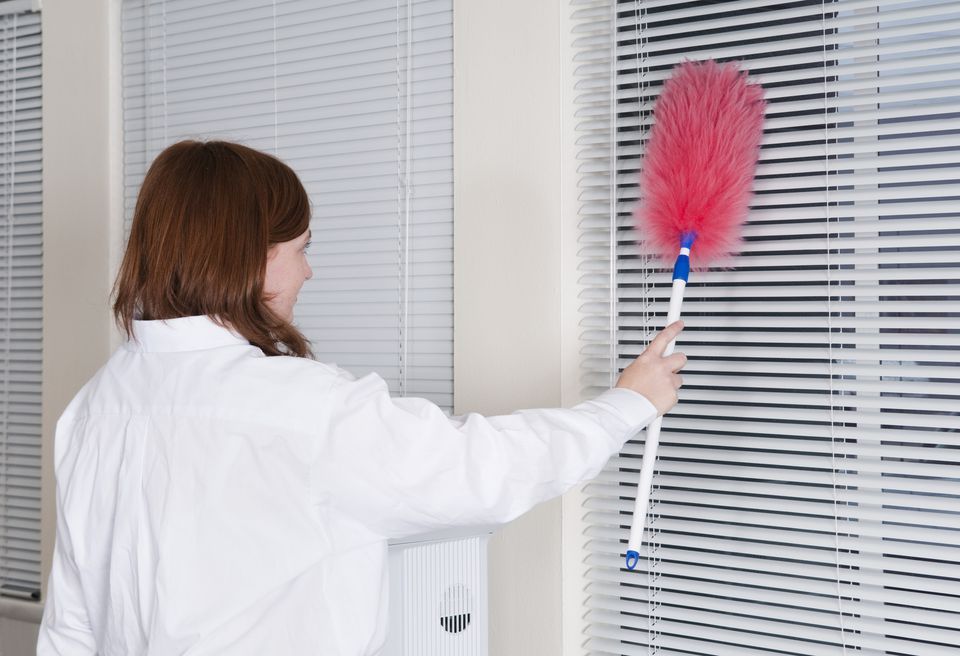Dusting is a crucial household chore that should not be overlooked or skipped. While it may not seem as pressing as cleaning high-touch or high-traffic areas, neglecting dusting can lead to various health problems and discomfort. Airborne dust contains allergens that can trigger allergies, asthma attacks, and other respiratory issues. Besides the health implications, household dust is unsightly and can make your living space feel unclean.
Did you know that dust is primarily composed of human skin particles? It also contains a mix of dust mites, dust mite droppings, pet dander, mold spores, bacteria, and viruses. This unsettling combination can create an unhygienic environment and contribute to indoor air pollution.
To keep your home clean and free of these pesky particles, we have compiled the best tips, tricks, and products for effective dusting. From the often-neglected nooks and crannies to various household items, we’ll guide you on how to tackle dusting in every corner of your home. With a well-executed dusting routine, you can maintain a healthier, cleaner, and more pleasant living environment for you and your family.
Dust from the Top Down
When it comes to dusting, it’s essential to follow the same principle used in many cleaning tasks: start at the highest point and work your way down. This strategy ensures that as you dust, any particles that dislodge will fall onto surfaces you haven’t cleaned yet. If you begin by dusting lower shelves before tackling upper ones, you may end up having to repeat the process to achieve a thorough clean.
To avoid unnecessary extra work, always begin by dusting higher surfaces, such as ceiling fans, light fixtures, and upper shelves. Work your way down to tables, countertops, and finally, the lower shelves. By following this top-to-bottom approach, you’ll efficiently remove dust from each level without needing to backtrack.
Know Your Dust Magnets
Certain items in our homes act as dust magnets, and understanding how to keep them dust-free is essential in controlling and eliminating household dust. Here are some common dust magnets along with tips and tricks to maintain a dust-free environment:
- Electronics: TVs, computers, and stereo equipment attract dust due to static electricity. Use a microfiber cloth for all-over dusting and a clean paintbrush to reach crevices where dust accumulates. An effective alternative is using a coffee filter to dust electronics.
- Walls, Door Frames, Ceilings, and Baseboards: Flat surfaces, even vertical ones like walls, often gather dust but can be overlooked. Use microfiber dusters or telescoping, flexible dusting tools to easily clean these hard-to-reach areas.
- Books and Knickknacks: Books and paper goods attract dust, making bookshelves with knickknacks dust hotspots. A feather duster is suitable for cleaning knickknack-laden shelves quickly.
- Household Appliances: Major household appliances like refrigerators, ovens, washers, and dryers also attract dust. Use a vacuum with a dusting attachment to eliminate dust buildup on their exteriors, ensuring you pull them out from the wall for a thorough clean.
- Upholstered Furniture and Window Treatments: Dust can go unseen on fabric, but upholstered furniture and window treatments retain significant amounts of dust and dust mites. Regularly vacuum them using an upholstery attachment to keep them dust-free.
- Mattresses and Headboards: Dust can accumulate on mattresses and headboards, especially upholstered ones. To maintain a dust-free bed, vacuum the mattress regularly using an upholstery attachment.
Prevent Dust from Accumulating
If you’re tired of constantly dusting your home, here are some effective ways to reduce dust and allergens:
- Seal Windows and Doors: Properly seal windows, doors, and any other dust entryways like cracks in flooring. Closed doors and windows help reduce external dust, but sealing them tightly further prevents dust from sneaking in.
- Clean Vents Regularly: Your home’s HVAC system plays a vital role in dust management by capturing dust particles through the vents and removing them with air filters. Keep vents clean and unobstructed to ensure your HVAC system functions efficiently. Regularly wipe vent covers with a microfiber cloth and use a vacuum’s crevice attachment to remove debris. For a deeper clean, unscrew the vent covers, scrub them with soap and water, and dry them thoroughly before reinstalling.
- Keep Filters Clean: Properly maintained air filters are crucial in managing household dust. Check the manufacturer’s recommendations for how frequently to change the filter. Fiberglass filters usually require monthly replacement, while pleated filters should be changed every three to six months.
- Use Entrance Mats: Place doormats at entryways to prevent external pollutants, including dust, from entering your home. Designate your home as a no-shoe zone to further reduce allergens tracked inside.
- Pamper Your Pets: Regularly groom your pets and keep their bedding, toys, and clothes clean to improve air quality and reduce dust levels. Frequent brushing and bathing help eliminate dander at its source. Launder removable pet bed covers in hot water or use a vacuum with an upholstery attachment to remove dust mites and dander, as pet beds are notorious dust mite hotspots.
Try a Few Dusting Hacks
Dusting your home can be a straightforward task, but certain items and spaces might pose challenges when it comes to keeping them dust-free. Here are some useful dusting hacks to tackle those tricky areas:
- Line Hard-to-Reach Places: Cover the tops of cabinets and other difficult-to-reach spots with newspaper, contact paper, or any easy-to-remove liner. Instead of deep cleaning these areas to remove dust and debris, simply lift and discard the liner, then replace it with a new one.
- Clean Ceiling Fan Blades with a Pillowcase: To avoid dust and debris showering down when cleaning ceiling fan blades, use an old pillowcase. Slide the open end of the pillowcase over the fan blade, grip the opening with your hands, and slide it back towards you. The dust will be trapped inside the pillowcase, keeping your space cleaner.
- Dust with Dryer Sheets: Dryer sheets are great for dusting as they attract dust and hair while leaving behind a thin layer of anti-static residue. This residue helps repel dust, keeping surfaces like baseboards, window frames, and vent openings cleaner for longer.
- Use a Paintbrush for Delicate Items: When dealing with small, intricate, or delicate items, a paintbrush can be the perfect dusting tool. Its soft bristles gently remove dust from items such as intricately carved furniture or electronics without causing any damage.
Know Your Dusting Tools
When it comes to dusting tools, there are various options available on the market, and it can be challenging to determine which ones are essential for your needs. In general, microfiber cloths and dusting tools stand out as top choices for effective dusting. If you’re looking to invest in just one duster, a microfiber cloth is a versatile and reliable option. However, there are other useful dusters worth considering:
- Telescoping Dusters: These dusters come with extendable handles, making it easier to reach and clean hard-to-access places like window casings, baseboards, and the tops of cabinets.
- Vacuum with Attachments: A vacuum equipped with the right attachments can be a powerful ally in the battle against household dust. It helps you efficiently remove dust from various surfaces and tight spaces.
- Paintbrushes and Dusting Gloves: Small specialty tools like paintbrushes and dusting gloves can be invaluable when dusting delicate or intricate items and electronics. They allow you to clean these items with precision and care.
- Tape and Sticky Rollers: To tackle hard-to-clean fabric goods like lampshades, consider using tape or sticky rollers. They effectively pick up dust and debris from these surfaces.
- Canned Air and Electronic Dusters: For dislodging dust from places that are difficult to reach with other tools, canned air and electronic dusters are handy options.














Leave a Reply